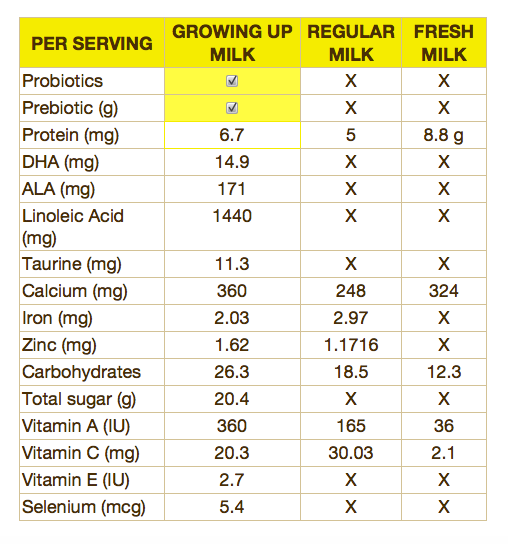Are all milks the same? Truth be told, before I became a mom, I thought they were. Back then, all I know is that they all provide the necessary nutrients especially calcium. But when I became a mom, I learned they are not the same at all. Cow’s milk, goat’s milk, full cream, skim milk , liquid to powder–they are all rich in macro (carbohydrates, fats, and protein) and micro (vitamins and minerals) nutrients, but not all contains those that answer the needs of children at specific age.
Having two kids made me realize that not all milks are the same. While it’s important to provide my kids with food with right nutrients, I also learned that I should give them age-specific milk that contains both probiotics and probiotics. Remember I shared how big a difference it made when I shifted lil’ Mr. JG from fresh milk to Nido 3+?
I was amazed with how finding the right milk can really provide the necessary nutrients one needs in his growing years. So when Nido invited me and a handful of bloggers to a roundtable discussion about how milks are not alike, I confirmed immediately my attendance because I wanna know more about these differences.
WHAT IS MILK?
It’s a source of calcium. This is such a common answer that we all know. Milk is a source of nutrition produced from mammary glands. It contains macronuturients (carbohydrate, protein, and fats) as well as micronutrients (vitamins A, B1, B2, B3, B6, folate, riboflavin, thiamine among others) and micro-minerals (zinc, calcium, iodine, iron, potassium, phosphorus among others).
FACTS ABOUT COWS MILK
Cow’s milk is the most common source of milk for children above 3 years of age. It’s advantageous over other milk source and it contains more calcium. It’s also available in many forms and has double the protein in any other form.
Cow’s milk was our choice for lil’ Mr. JG after I weaned him but like I said in one of my posts, he had a hard time digesting it and had bloated tummy. While cow’s milk works for others, unfortunately it didn’t for my son.
I also learned that while cow’s milk has protein, carbohydrates, calcium, vitamin A 7 C, it lacked other essential nutrients such as vitamin e, iron, zinc, taurine, ALA, DHA, prebiotic and probiotics.
AGE SPECIFIC MILK
For the longest time, I’ve been curious what’s the reason behind those age specific milk? Age specific milk are also known as growing up milk. It contains complete nutrients a child needs for growth and development.
MAKE THE RIGHT MILK CHOICE
My lil’ Ms. JG is now 6 years old but still prefers her poweder milk over cow’s milk. While my lil’ Mr. JG who has a more sensitive tummy, despite liking cow’s milk prefers drinking Nido 3+. It’s safe to say we made the right milk choice for our son. Nico 3+ has Lactobacillu’s Protectus®–millions of live good bacteria that helps build your child’s bodily defences.
Take a look at what makes growing up milk, regular milk and fresh milk different from each other.
LACTOBACILLUS PROTECTUS®
Probiotics are live good bacteria that promote stomach balance and help strengthen the immune system. Probiotics, on the other hand, act as a multiplier of good bacteria, ensuring acceptable good-to-bad bacteria ration in the tummy and protection from within.
Children up to 5 years old have developing brains and grows about 3.5 times in mass. That’s why children this age are able to lean and absorb new knowledge like a sponge. This is where age-specific milk with high levels of DHA, ALA, and LA– fatty acids that work together to promote proper brain structure development and normal cognitive functions–comes in handy.
I’m really glad we made a switch to Nido 3+. My lil’ Mr. JG is now more active than ever!
Thank you so much Dr. Agnes Calleja & Tricia Turcuato, Lead Consumer Marketing Manager of Nido Growing Up Milk for the very informative lunch.
Milk plays a very important role in the overall growth and development of children, and so it pays to know what your child needs at different ages and stage of their growth for one to make the right milk choice.
NIDO




Leave a Reply